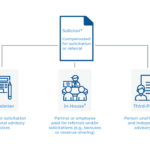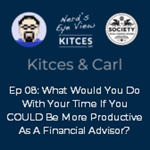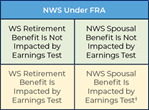 Welcome back to the 126th episode of Financial Advisor Success Podcast!
Welcome back to the 126th episode of Financial Advisor Success Podcast!
My guest on today's podcast is Martine Lellis. Martine is a principal and the chief operating officer at Sullivan, Bruyette, Speros & Blayney, an independent RIA with nearly $4 billion of assets under management serving 1,100 affluent clients in the Washington, D.C. area.
What's unique about Martine, though, is the way that she climbed the ladder at SBSB, starting out as an associate advisor only to see the RIA sold to a bank shortly thereafter, and then later moving into mid-level management roles and climbing all the way up to become the firm's COO, and then participating with four other principals who did a management buyout of the firm back from the bank and take the company private again.
In this episode, we talk in depth about Sullivan Bruyette's model for serving affluent clients. Why the firm offers tax preparation services for its most complex clients on top of their financial planning and investment management, the way the business involves its dedicated investment team directly with clients to the point that it's the investment team and not the advisors themselves who are primarily responsible for discussing investment results and the markets with clients, why Sullivan Bruyette hired a director of advisor services and development to become an internal practice management coach for their 10 advisor teams, and how the firm prices out its core financial planning and investment management services a separate fee for tax preparation and another separate fee for the especially big and complex financial planning projects their affluent clients sometimes need help with.
We also talk about Martine's own career path through the firm. The way she invested heavily in herself throughout her 20s by going back to school for both an MBA and her CPA license while also working full-time and largely paying her own way for the sake of her own career advancement, how her role in her 30s shifted more to learning the skills of management and developing her teams of people, and how now in her 40s her career focus is shifting again into more bringing in and developing the next generation of the firm's leadership and figuring out how best to motivate them while growing the firm. And what it took for Martine to get comfortable to take on a substantial amount of personal debt as a key employee to buy back the firm as part of the management team.
And be certain to listen to the end, where Martine shares the challenge that surprised her the most in building the business and her own career. Why the hardest time she worked were also some of the most exciting, and what the key breakthrough was in her own career that ultimately allowed her to grow to the next level.
So whether you're interested in learning about how Martine actively pursued opportunities to advance her career, how Sullivan Bruyette integrates tax preparation with their financial planning and investment management services (and how the firm prices out those services), or about the factors that drove the decision for an internal group of principals to buy back the firm from the bank that purchased it years before, then we how you enjoy this episode of the Financial Advisor Success podcast.









 Welcome back to the 125th episode of Financial Advisor Success Podcast!
Welcome back to the 125th episode of Financial Advisor Success Podcast!
